%20(4).png?width=730&name=template%20-%20latch%20client%20feedback%20(1200%20%C3%97%20630%20px)%20(4).png)
Employee burnout costs the U.S. economy more than $350 million each year in turnover, sickness, reduced productivity, and low morale.
Up 5.1% from 2020 to 2021, a whopping 34.7% of people are burnt out. The high amount of employees suffering from burnout combined with the impact on organizational culture and financial health sound alarm bells that leaders cannot ignore.
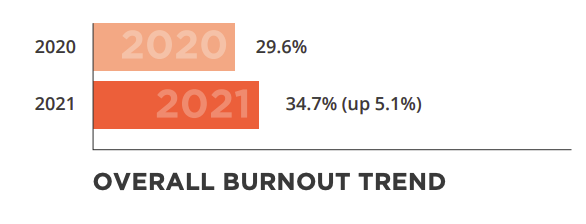
Although there's still a lot to learn about the prevalence and impacts of burnout, there is a solid amount that we do know about diagnosing, treating, and more importantly, preventing burnout in organizations.
Is it a Rough Week or Burnout?
Before leaders stand a chance of differentiating between a bad week and burnout, let's first start with how burnout is defined.
The World Health Organization defines burnout as a "syndrome...resulting from chronic workplace stress that has not been successfully managed."
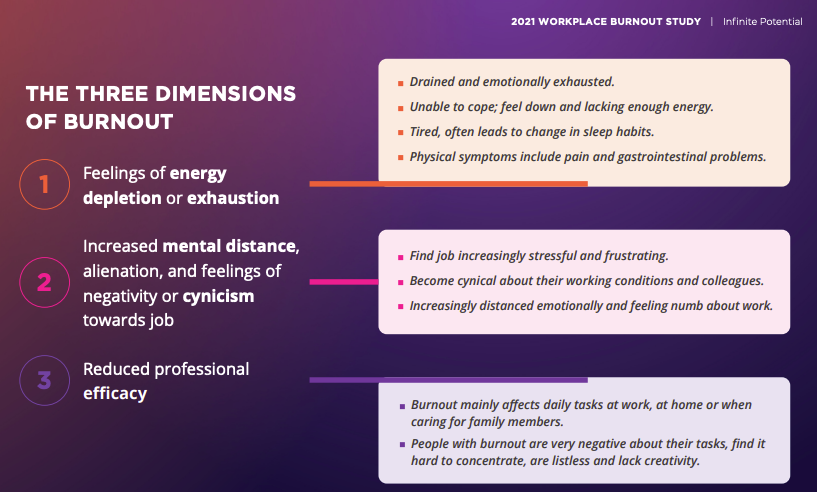
There's No Denying Burnout is a Big Deal
We teamed up with the PEER 150 Human Resources Group to host a session with movers and shakers in the people leader space. From companies like New Balance and Splunk, these panelists are experts who are in charge of employee wellness and a whole lot more.
This no-fluff conversation cuts to the chase about the good, bad, and ugly parts of burnout.
Tune into the video recording to get a play-by-play of everything that leaders need to know.
What Burnout-Related Trends Are People Leaders Observing?
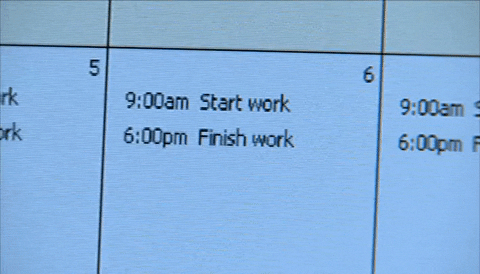
The impacts of burnout vary from company to company, but generally show up as: decreased productivity and performance, negative impact on company culture, and unwanted attrition. Here's what the panelists had to say about how burnout is affecting their organizations and what they're doing about it.
"By way of turnover, we have not seen a spike in office-based turnover, but we have seen on the front lines, particularly in our U.S. factories, an increase in turnover as more associates question the role of work in their lives. We will continue to talk about and really call out the need for our work to be purposeful and not just productive. – Joan McGrail, CHRO, New Balance
"We hadn't seen much productivity dip, although we experienced an increase in turnover and attrition. With turnover, it is hard to keep pace with getting the right people in seats that fit the skills, but also fit the culture while not having someone else have to take the burden because the work still has to get done. It requires rethinking work design and job design." – Sarika Lamont, former Chief Talent Officer
"We implement Global Rest Days. What we've seen in the data is it's a day off for everyone across the globe and so we do see that it actually works well as opposed to just giving individual days that people could take off and then still have the risk of compiling a lot of work." – Trey Whitney, Interim Chief People Officer, Splunk
Burnout: What to Do About it
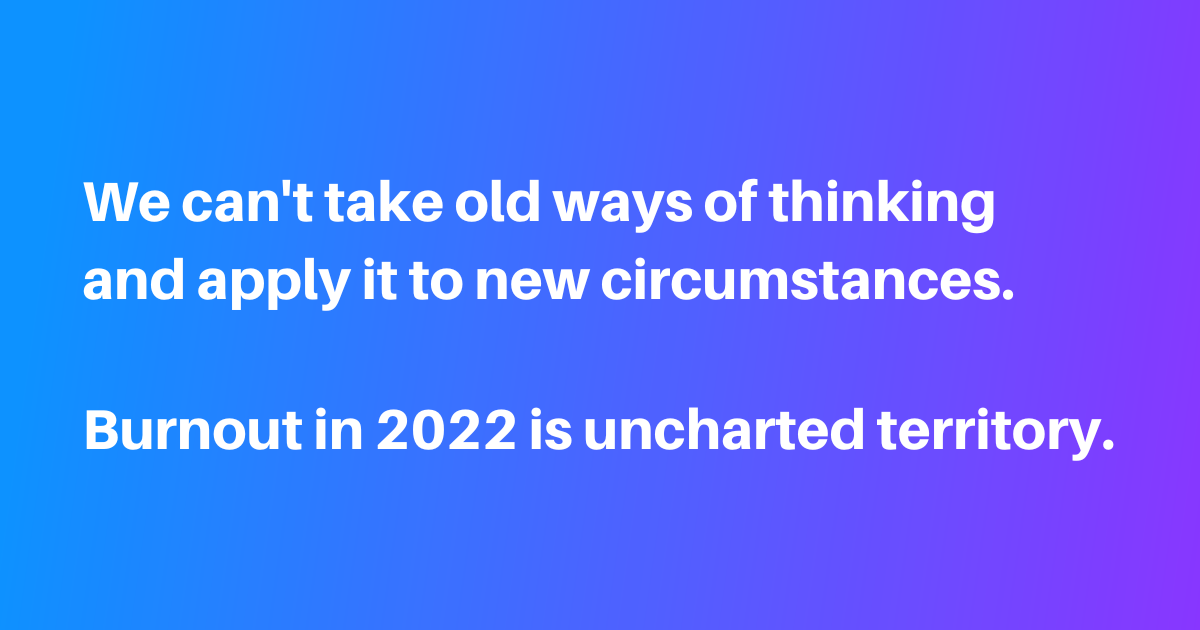
After working with hundreds of clients and connecting with other experts, we have identified tried-and-true best practices that sustain a thriving culture and prevent burnout.
- Clearly define your company culture, vision, and values – make this an inclusive process.
- Create a culture that promotes psychological safety and encourages employees to authentically connect.
- Lead with honesty, transparency, and vulnerability.
- Model the way by bringing heart and humanity to relationships and the workplace.
- Put in place policies that directly support organizational strategy (versus one-offs).
- Remind employees to prioritize their well-being and speak up when they need support.
- Host discussions around work barriers that contribute to stress – AND do something to reduce and remove those issues.
- Offer resources and training to help managers.
Above all else, prioritize authentic connection. It's the antidote to burnout.
In the past, an employer's primary tool for facilitating community and connection was the office culture. Now with the rise of hybrid and remote work environments, employees often struggle to feel a genuine sense of belonging at work. Did you know that 60% of remote workers say that working from home has made them feel less connected to their colleagues?
At SHIFT, we've identified five points of connection that are critical to employees' success. Teammates who feel connected to their company, work, manager, peers, and self are more likely to feel fulfilled and less likely to be burnt out.
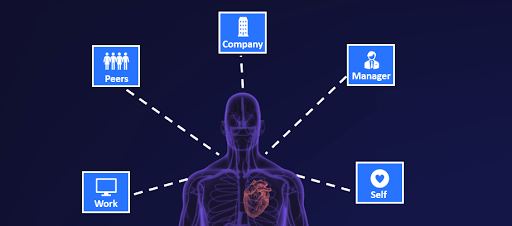
Through working with clients, Andrew Freedman has observed in companies that are doing well there are higher "levels of connection to peoples' personal priorities, to their peers, to their bosses, to their work, and to the company." On the flipside, he's seen how burnout spikes in companies that take a fragmented, non-strategic approach to creating connection and controlling burnout.
Make an Impact with a Single Action
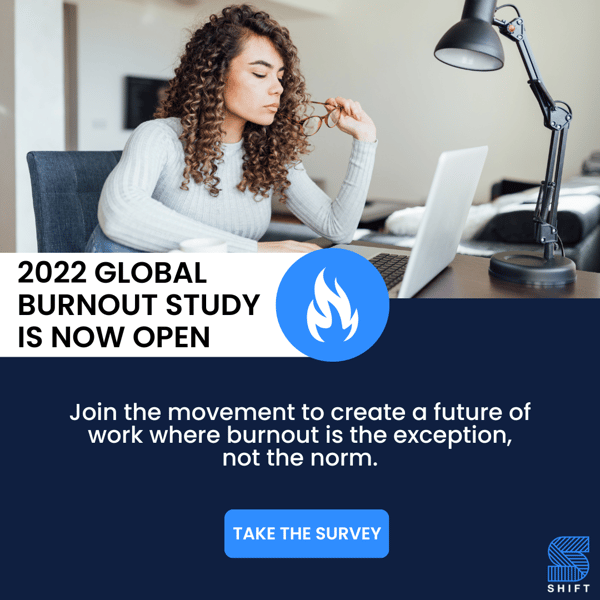
Burnout has no place in the future of work. We have to take action if we want to make burnout a thing of the past.
What if YOU could play a role in preventing burnout on a global scale – in less than 10 minutes by answering an anonymous short survey?
The 2022 Global Workplace Burnout Study is open through September 30th, 2022. By contributing to this important research, you can help further the world's understanding of the increasing prevalence of burnout and what we can do about it.








